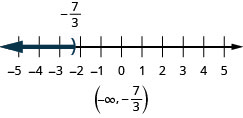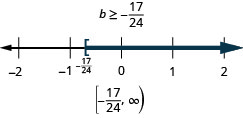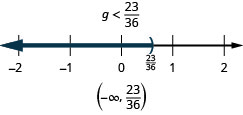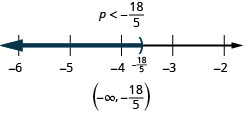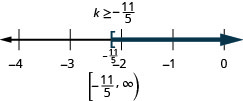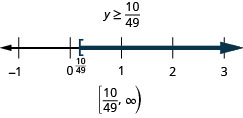1.5E: Exercises
( \newcommand{\kernel}{\mathrm{null}\,}\)
Practice Makes Perfect
In the following exercises, graph each inequality on the number line and write in interval notation.
- x>3
- x≤−0.5
- x≥13
- x≤5
- x≥−1.5
- x<−73
- −2<x<0
- −5≤x<−3
- 0≤x≤3.5
- −4<x<2
- −5<x≤−2
- −3.75≤x≤0
- Answer
-
In the following exercises, solve each inequality, graph the solution on the number line, and write the solution in interval notation.
- b+78≥16
- 6y<48
- 40<58k
- g−1112<−518
- 7s<−28
- 94g≤36
- −8v≤96
- b−10≥30
- −7d>105
- −18>q−6
- Answer
-
In the following exercises, solve each inequality, graph the solution on the number line, and write the solution in interval notation.
- 5u≤8u−21
- 9p>14p+18
- 9y+5(y+3)<4y−35
- 4k−(k−2)≥7k−26
- 6n−12(3−n)≤9(n−4)+9n
- 9u+5(2u−5)≥12(u−1)+7u
- 12v+3(4v−1)≤19(v−2)+5v
- 35k≥−77
- 18q−4(10−3q)<5(6q−8)
- −218y≤−1528
- Answer
-







